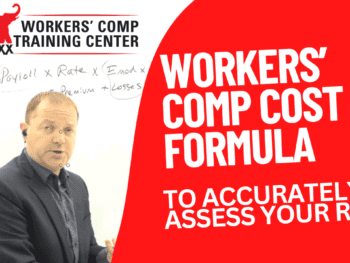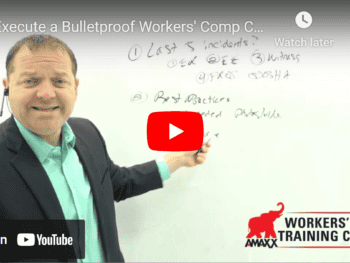
Understanding the Basics
The Immigration Reform and Control Act controls employment practices in the United States. Under this law, only American citizens or non-citizens with the proper work permits are allowed to perform work legally. However, employers continue to employ people without proper authorization – in some instances knowingly engaging in this type of employment practice.
A state’s workers’ compensation law defines eligibility for benefits. In many instances, one’s legal employment status does not serve as a bar to benefits after following a work injury.[1] The issue of hiring someone not legally allowed to work in the United States is not going away. The only true way to deal with such issues is to make good faith efforts when verifying someone’s work status. The reality is even if an employer undertakes these efforts, people not legally allowed to work will continue to seek employment.
Effective Claim Handling with Undocumented Employees
Many employees working inside the United States without proper documentation are hardworking and performing “high risk” jobs. Handling a claim with someone who is undocumented does not give stakeholders in the workers’ compensation process license to discriminate. The bottom line is all injured employees should be treated with respect and dignity.
Employers need to take the lead on this issue during the pre-employment screening phase and following a work injury. Interested stakeholders within these organizations should take note of the following principles:
- Understand the requirements of the Immigration Reform and Control Act in employment practices;
- Apply consistent standards to acceptable documents for verifying an applicant’s immigration status. Special document requests cannot be made unless prescribed by applicable law; and
- Complete and maintain the proper paperwork for all employees. This includes the federal I-9 form.
The workers’ compensation insurer must provide all benefits an injured worker is entitled to under the jurisdiction’s law following a work injury.
Other Tips to Avoid Traps
Members of the workers’ compensation claims management team need to be proactive when it comes to handling claims involving employee’s who are undocumented.
- Effective Discovery: It is important to understand the facts of the case in order to develop a complete analysis. Digging too deep into an employee’s immigration status following an injury during the investigation and discovery phase may not be helpful in the end. If the employer legitimately believes an injured worker is legally able to work inside the United States, but later has knowledge of their true status, they may be precluded from making a valid written job offer.
- Encourage RTW Efforts for All Employees: Returning all employees to work following an injury reduces the medical and indemnity benefits paid on a claim. If an employer believes an employee is legally permitted to work inside the United States and does not have knowledge otherwise, it is permissible to make a job offer conditioned on the presentation of valid work documentation. Consultation with an attorney before choosing this option is prudent.
- Cooperate and Make Timely Wage Loss Benefits: Unless specifically excluded by statute or case law, all employees regardless of immigration status are entitled to wage loss benefits. Failing to cooperate or make timely payment of benefits can lead to litigation, sanctions/penalties and create ill will.
Conclusions
All employees need to be treated ethically. This includes common courtesy and respect regardless of one’s immigration status. After making sure these prerequisites take place, interested stakeholders need to be proactive and coordinate efforts when dealing with someone who is not legally allowed to work inside the United States following a work injury. This includes understanding the law and working with an attorney to avoid excessive workers’ compensation program costs.
[1] In Correa v. Waymouth Farms, Inc., 664 NW 2d 324 (Minn. 2003), the Minnesota Supreme Court upheld the award of TTD benefits to an undocumented worker based on basic tenants of statutory construction. The Court did not discuss the undocumented employee’s edibility to vocational rehabilitation benefits. Courts in other jurisdictions have reach a similar conclusion in all but a few instances.

Contact: mstack@reduceyourworkerscomp.com.
Workers’ Comp Roundup Blog: https://blog.reduceyourworkerscomp.com/
©2018 Amaxx LLC. All rights reserved under International Copyright Law.
Do not use this information without independent verification. All state laws vary. You should consult with your insurance broker, attorney, or qualified professional.













